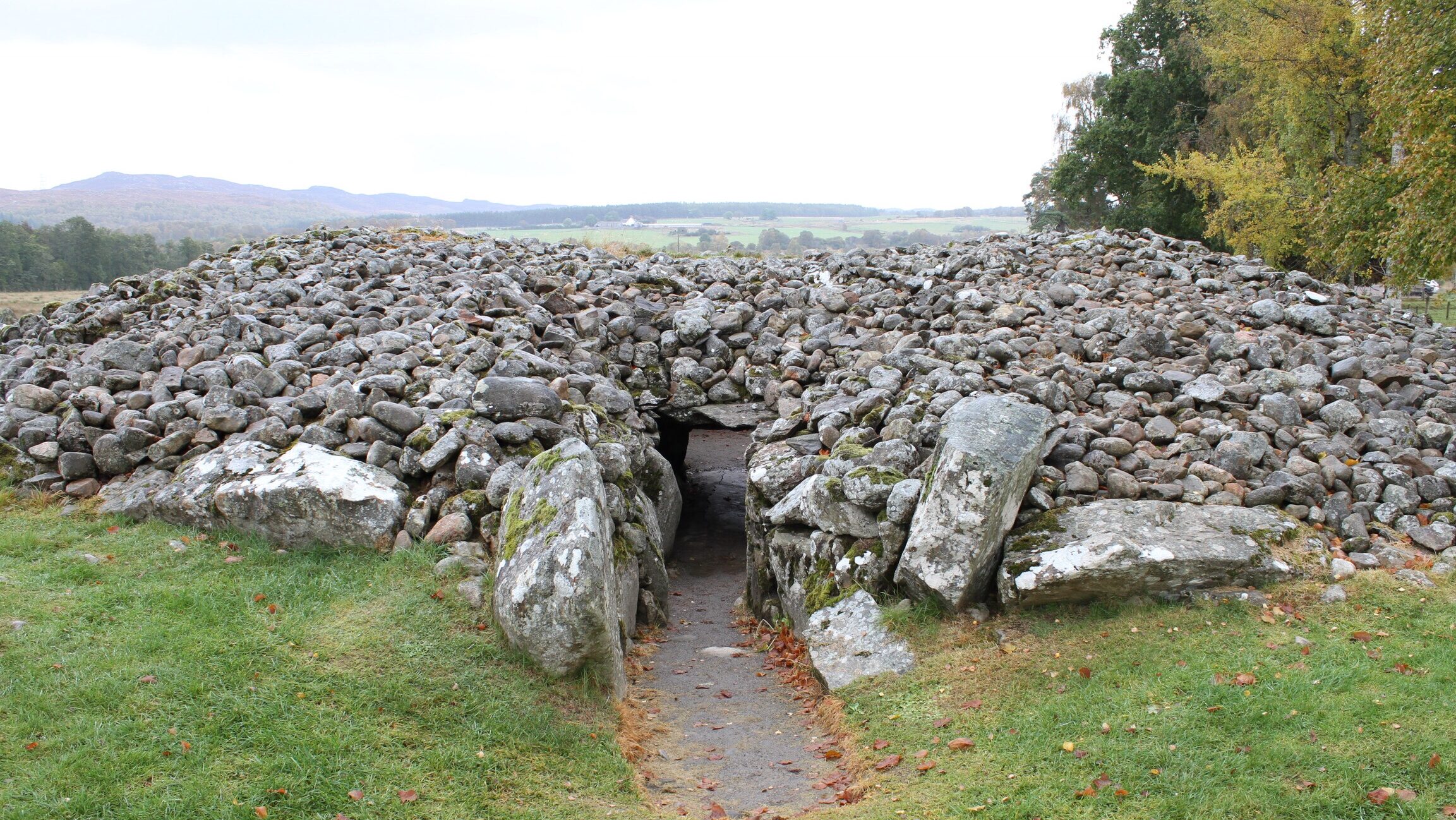Just a 15-minute drive from Drumnadrochit, in the Highlands of Scotland, you can find this well preserved ancient monument dating back 4000 years.


This monument is a Clava Cairn, which is a bronze age manmade circular chambered tomb, constructed by placing stones on top of each other to create a mound. Neolithic farmers built this Clava Cairn for burials.

You can see from the diagram that the Cairn originally had a ring of stones holding up the roof, but over time these appear to have been buried within the ground. There is a passage which goes into a circular centre chamber measuring approx 3 metres. This is now open to the sky but would have originally been covered by a large slab, which can still be found on top of the cairn.



In the above photo you can see an example of a large stone which is part of a circle of 12 stones which surround the Cairn. The significance of this circle of stones unknown. The passage of the chamber has been designed so it faces south west, possibly so it can allow the soul of the deceased to take a safe passage to the afterlife.
Just along the track, visitors can also visit Corrimony RSPB nature reserve where Black Grouse, Golden Eagles and Scottish Crossbills maybe spotted.



Awesome! I love to visit anything that is old! 4000 years that’s just great. Fabulous photos!
I’m enjoying your post series on the Highlands. Would love to wander those old ruins. Love that beautiful backdrop. Definitely a great place to hike.
Just love stuff like this! Isn’t it amazing being able to explore ruins like this from thousands of years ago? Lovely photographs too!
Amazing! I would love to go here and do some exploring. Thanks for sharing! 🙂
I love learning about ruins from around the world! My mind tends to wander and imagine life in those times.
I wonder if anything built in my lifetime will be preserved for centuries….hmmmm
These cairns fascinate me. I would love to know what the builders had in mind…and I often wonder if we are anywhere near right in our assumptions. Interesting stuff – and beautiful sights!
This is interesting! It certainly reminds me of many things I’ve seen featured in movies. This looks like a great place to explore!
Wow, this is fascinating. I love that these sites are still able to be visited and are so well preserved. More of Scotland to see!